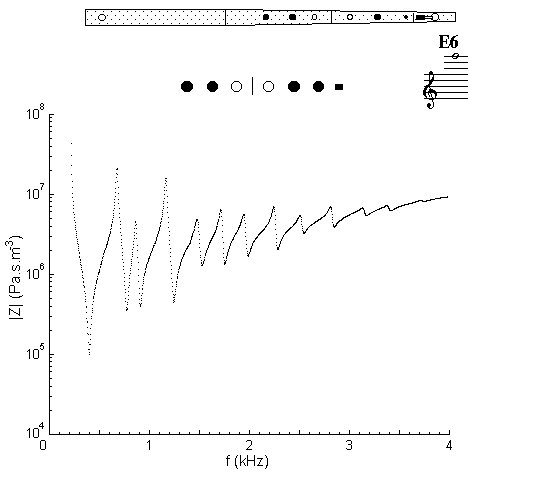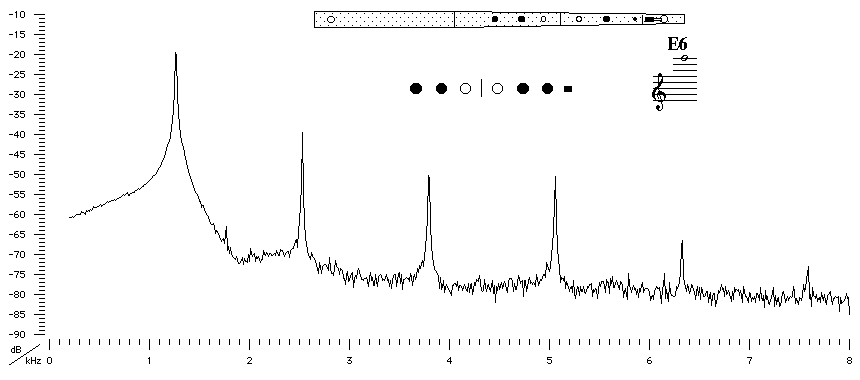| Acoustics of baroque, classical and modern flutes |
baroque flute |
E6 |

|
Acoustic and Fingering Schematic Non-specialist introduction
to acoustic impedance |
This fingering looks odd at first. It is a weakly cross fingered version of the A4 fingering, but the third minimum in A4 is actually flat. However, this cross fingering actually brings the fourth minimum down to the pitch of the third harmonic of A4. It also weakens the third minimum. It has only a weak effect on the first minimum, so this fingering will also play a note between A4 and Ab4 if blown softly. For more on cross fingerings, download a brief scientific report.

Sound spectrum
of a baroque flute played using fingering for E6.
![]()
![]()
![]()
![]() You can hear E6
played by Matthew Ridley.
You can hear E6
played by Matthew Ridley.
| Acoustic measurements are available for these flutes - modern B, modern C, classical C, classical D, classical flared, baroque Sound clips are available for modern B, classical flared and baroque |
To compare flutes, it is easiest to open a separate browser window for each instrument. |